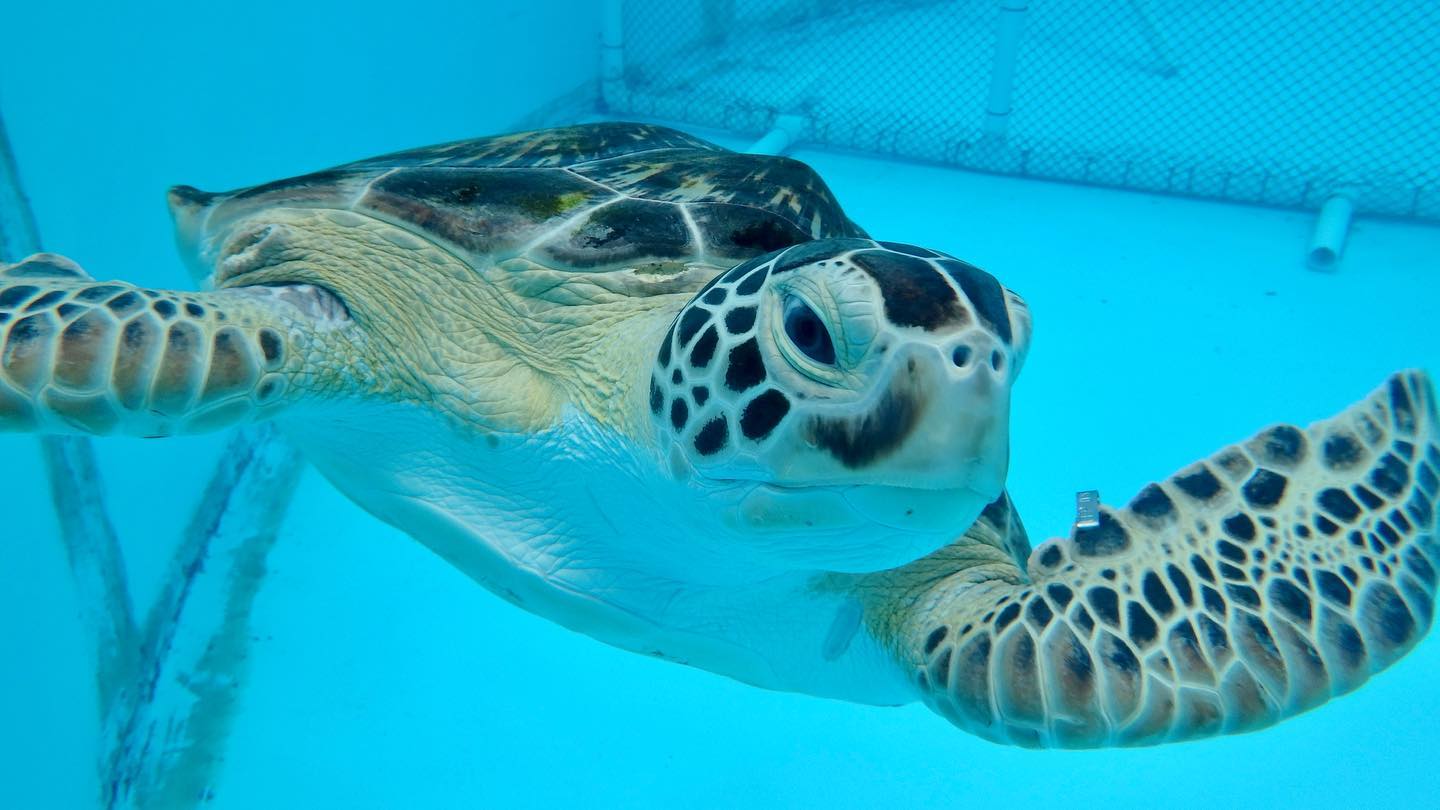“When the little dudes are just eggs, we leave them on a beach to hatch, and coo-coo-cachoo, they find their way back to the big ol’ blue,” the sea turtle known as Crush explains in the film “Finding Nemo.” According to the World Wildlife Fund, the early years of these creatures’ lives, known as the “lost years,” encompass their journeys from the shores to shallow waters along the coasts.
This journey is challenging to gather data on. Loggerhead turtles, one of the seven known species, spend seven to 15 years in the open ocean after leaving the beaches of Australia or Japan and traveling almost 8,000 miles to the coasts of California, Mexico, or Chile. The mystery of it all adds to these creatures’ allure, which is part of why today, World Sea Turtle Day, is so important.
Loggerhead turtle / Photo Courtesy NOAA Fisheries
Vital To Ecosystems
Not only are sea turtles extremely beautiful creatures, but they are also vital to ocean ecosystems, according to a 2010 report by Oceana. By eating seagrass, they prevent the beds from becoming overgrown and increase the blades’ nutrient content. This diet also gives the turtles their green hue.
Hawksbill sea turtles have beaks that they use to penetrate coral reefs to find and eat marine sponges. Without them, the sponges would take over the ecosystem, leaving less room for the coral. Leatherback sea turtles can travel 10,000 miles annually to eat jellyfish, sometimes up to 440 pounds daily. Without this predator, jellyfish would grow in number with repercussions for the number of fish since they eat fish eggs and larvae.
Similarly, loggerhead sea turtles’ strong jaws enable them to break open crustaceans’ shells into smaller pieces that disintegrate faster and speed up nutrient recycling.
Plus, the turtles’ eggs benefit onshore vegetation by adding nutrients to the beaches where they are laid, providing an extra source of stabilization for dunes. Those that survive and take to the sea also carry algae and barnacles that serve as a food source for shrimp and small fish.
Hawksbill turtle / Photo Courtesy U.S. Fish and Wildlife Service
Sea turtles are some of the oldest animals still in existence. The oldest of their fossils, found in Colombia, is 120 million years old, roaming the earth during the Early Cretaceous period alongside Iguanodons. Leatherback sea turtles, in particular, have not changed since the time of the dinosaurs. They are the largest in the world, weighing 750 to 1,000 pounds, with thick and rubbery skin but no scales or shells.
Leatherback turtle / Photo Courtesy NOAA Fisheries
Species’ Decline
Despite their long history, all six species found in U.S. waters are listed as endangered or threatened under the Endangered Species Act. The Kemp’s ridley turtle, the smallest of the bunch at 2 feet long, is the most endangered. The seventh species, the Flatback, is “data deficient,” although it is labeled vulnerable by the Australian Environment Protection & Biodiversity Conservation Act.
Notably, only one out of every 1,000 sea turtle hatchlings survive to become adults. They face a treacherous journey from the beach to the water, with numerous predators ready to pounce and disorientation caused by artificial lights from coastal hotels and homes.
Kemp’s ridley turtle / Photo Courtesy Kate Sampson, NOAA Fisheries
Direct human activities are largely responsible for the status quo. A 2015 study conducted by Dr. Qamar Schuyler of the University of Queensland found that “approximately 52% of turtles worldwide have eaten debris,” which can cause blockages in their digestive system.
A 2016 study by the University of Tokyo found that loggerheads ingested plastic 17% of the time they encountered it, while green turtles ate it 62 % of the time.
Other animals are accidentally caught by fishing nets or hunted for their meat and shells. The Hawksbill turtle’s shell, in particular, is in high demand and partly responsible for their 90% population decline over the past 100 years. As coastal development ramps up and walls are built to protect properties, nesting beaches and habitats are also disrupted.
Climate change also plays a role. A heating planet raises sand temperatures, which causes more females to develop than males and impacts future reproductive capacity. It also leads to rising sea levels and more storms that cause lower survival rates for babies.
Olive ridley turtle / Photo courtesy NOAA Fisheries
Honoring An Advocate
World Sea Turtle Day is celebrated on the birthday of Dr. Archie Carr, who founded the Sea Turtle Conservancy — once called the Caribbean Conservation Corporation — and is known as the “father of sea turtle biology.” He fought for their conservation by writing 11 books and 120 articles about the animals and serving as chairman of the International Union for Conservation of Nature’s Marine Turtle Specialist Group.
Carr also directed U.S. Navy pilots and planes in “Operation Green Turtle,” depositing their eggs from the nesting beach on Tortuguero to other Caribbean countries. Although the mission’s success is unclear, he also worked with the Costa Rican government to protect that beach, now known as Tortuguero National Park. By following his lead, we can better protect these vital creatures.
Green sea turtle / Photo Courtesy NOAA Pacific Islands Fisheries Science Center





